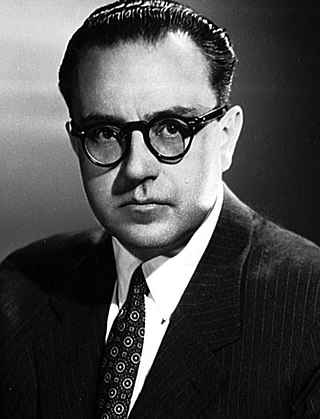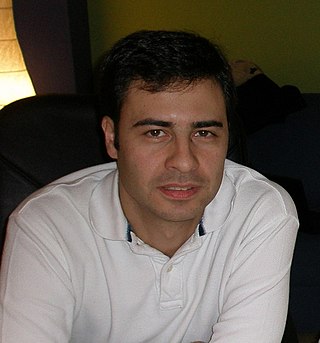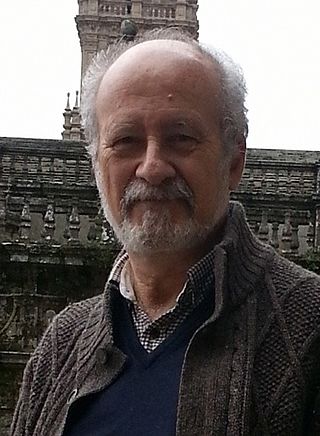
Alberto Evaristo Ginastera was an Argentine composer of classical music. He is considered to be one of the most important 20th-century classical composers of the Americas.

Joaquín Rodrigo Vidre, 1st Marquess of the Gardens of Aranjuez, was a Spanish composer and a virtuoso pianist. He is best known for composing the Concierto de Aranjuez, a cornerstone of the classical guitar repertoire.
Tomás Marco Aragón is a Spanish composer and writer on music.
Roberto Sierra is a Puerto Rican composer of contemporary classical music.

Arturo Márquez Navarro is a Mexican composer of orchestral music who uses musical forms and styles of his native Mexico and incorporates them into his compositions. His best known work is Danzón No. 2.
Gabriel Fernández Álvez was a Spanish composer. He represented Spain at the I.S.M.E.'s XII Congress and the I.S.C.M.'s XII Congress.
Miguel Gálvez-Taroncher is a Spanish cultural manager and musician, trained in Madrid and Vienna.
Antón García AbrilOAXS was a Spanish composer and musician. He composed many classical orchestral works, chamber and vocal pieces, as well as over 150 scores for film and television.

Alejandro López Román is a Spanish composer and pianist. Musician of eclectic style, his works cover both current symphonic composition like jazz or film music.

Ernesto Cordero is a Puerto Rican composer and classical guitarist.
Marcelo Koc was an Argentine composer.

José Luis Turina is a Spanish composer, grandson of Joaquín Turina.

Mariano Etkin (1943–2016) was an Argentine composer.
Miguel Ángel Roig-Francolí is a Spanish/American composer, music theorist, and pedagogue. His 1980 Cinco piezas para orquesta, commissioned by Radio Nacional de España and written in a postmodern, neotonal style, won first prize in the National Composition Competition of the Spanish Jeunesses Musicales in 1981 and second prize at the UNESCO International Rostrum of Composers in 1982, and continues to be widely performed in Spain. His later compositions often have spiritual themes and are based on sacred texts and the melodies of Gregorian chant. In 2016 he won the American Prize in Composition for Perseus, for symphonic band. An expert on Renaissance composers Tomás de Santa María, Antonio de Cabezón, and Tomás Luis de Victoria, he has published numerous scholarly articles and monographs and two textbooks. Roig-Francolí is a Distinguished Teaching Professor of Music Theory and Composition at the University of Cincinnati – College-Conservatory of Music.
Luis de los Cobos Almaraz was a Spanish composer. In 1944, he was briefly jailed for taking part in protests against the Francoist government, and after he finished his studies in 1949 he couldn't find a job since he lacked the certificate of adherence to the Spanish State, so he went to exile, settling in Geneva after studying orchestral conducting under Bernardo Molinari in Rome and Eugène Bigot in Paris. Like Xavier Montsalvatge and Manuel Castillo he has been defined as a missing link in the postwar Spanish music, as he was influenced by Shostakovichian modernism while the Spanish scene evolved from nationalism to the Darmstadt avantgarde through his contemporaries of the 1951 Generation. He composed four operas, two symphonies, four concertos and six string quartets.
Jacobo Ficher was a Ukrainian-born Argentine composer, violinist, conductor, and music educator.

Guido Antonio Santórsola di Bari Bruno was a Brazilian-Uruguayan composer, violinist, violist, viola d'amore player, and conductor of Italian birth.
Eduardo Morales Caso, is a Cuban composer.

Joan Guinjoan i Gispert was a Catalan composer and pianist.
This page is based on this
Wikipedia article Text is available under the
CC BY-SA 4.0 license; additional terms may apply.
Images, videos and audio are available under their respective licenses.








